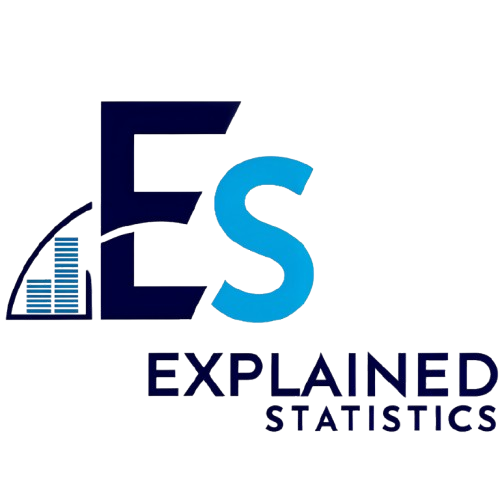Introduction
Understanding AP Statistics equations is vital for exam success. These equations are the backbone of statistical analysis, helping students make sense of data. The AP Statistics exam can be daunting. With various concepts to grasp, equations can feel overwhelming. Yet, fear not! Students receive a handy formula sheet during the exam. This sheet is a helpful tool, but relying solely on it isn’t enough.
Familiarity with these equations and their applications can make a world of difference in problem-solving. Knowing when and how to apply each formula is crucial. It helps you navigate through complex scenarios with ease. Imagine being in the exam room, staring at a problem, and instantly recalling the right equation. That’s the confidence we’re aiming for!
This article aims to provide a comprehensive overview of key AP Statistics equations. We’ll organize them by topic for easy understanding. Additionally, we’ll share practical tips to help you master these equations. So grab your Texas Instruments TI-84 Plus CE Graphing Calculator and get ready to conquer those stats!

Understanding the AP Statistics Formula Sheet
What is the AP Statistics Formula Sheet?
The AP Statistics Formula Sheet is a critical component of the exam. It serves as a reference guide, packed with essential formulas. During the test, students receive this two-page resource, which contains formulas categorized into three sections: descriptive statistics, probability, and inferential statistics. Think of it as your trusty sidekick!
The formula sheet is designed to help you tackle various problems efficiently. It’s structured so you can quickly locate the relevant equations. For example, if you find yourself grappling with a probability question, you can easily flip to the corresponding section. This organization can save precious time during the exam.

Key Features of the Formula Sheet
While the formula sheet is incredibly useful, knowing how to use the formulas is even more important. Simply memorizing them won’t get you far. Understanding each formula’s components and when to apply them is the real game changer.
The sheet also includes probability tables and auxiliary resources. These tools can further assist you in solving problems. They provide valuable information, such as critical values and standard distributions. Familiarizing yourself with these features will enhance your confidence and efficiency.
To maximize the utility of the formula sheet, practice using it alongside problem sets. This way, you’ll develop a natural instinct for knowing where to find the necessary information during the exam. Remember, becoming comfortable with the formula sheet can make your exam experience much smoother!

Descriptive Statistics Equations
Overview of Descriptive Statistics
Descriptive statistics play a vital role in summarizing and interpreting data. They help us make sense of large datasets, transforming them into understandable insights. Imagine trying to read a novel without its summary. Confusing, right? That’s where descriptive statistics come in!
These statistics provide a snapshot of your data. They allow you to quickly assess trends, patterns, and outliers. By presenting data in a more digestible format, descriptive statistics make complex information more approachable. They answer questions like: What’s the average score on your latest math test? How spread out are the results?
In essence, descriptive statistics serve as the foundation of data analysis. They pave the way for deeper explorations, enabling us to better understand the underlying trends. With this in mind, let’s dive into some key equations that will help you navigate descriptive statistics like a pro!

Key Equations
Sample Mean
The sample mean is a fundamental concept in statistics. It represents the average value of a dataset. The formula for calculating the sample mean is:
𝓇 = \frac{\Sigma x_i}{n}
Where:
- 𝓇 is the sample mean.
- Σ x_i is the sum of all sample values.
- n is the number of observations.
Let’s say you have the following test scores: 85, 90, 78, 92, and 88. To find the sample mean, add these scores together:
85 + 90 + 78 + 92 + 88 = 433
Now, divide by the number of scores:
𝓇 = \frac{433}{5} = 86.6
Voila! The average score is 86.6.

Sample Standard Deviation
Next up is the sample standard deviation, a crucial measure of variability. It tells you how spread out your data points are. The formula is:
s = \sqrt{\frac{\Sigma (x_i - 𝓇)^2}{n - 1}}
In this equation:
- s is the sample standard deviation.
- x_i represents each observation.
- 𝓇 is the sample mean.
- n is the number of observations.
Using our earlier test scores, we already calculated the mean. Now, let’s find the standard deviation. First, calculate the squared differences from the mean:
(85 - 86.6)^2 = 2.56(90 - 86.6)^2 = 11.56(78 - 86.6)^2 = 73.96(92 - 86.6)^2 = 28.96(88 - 86.6)^2 = 1.96
Add these squared differences:
2.56 + 11.56 + 73.96 + 28.96 + 1.96 = 118.00
Now, divide by n – 1 (which is 4):
\frac{118.00}{4} = 29.5
Finally, take the square root:
s = \sqrt{29.5} \approx 5.43
So, the sample standard deviation is approximately 5.43.

Simple Linear Regression
Simple linear regression is a powerful tool for analyzing the relationship between two variables. The equation used is:
\hat{y} = b_0 + b_1 x
In this formula:
- 𝛩 is the predicted value.
- b_0 is the y-intercept.
- b_1 is the slope of the line.
- x is the independent variable.
Suppose you’re predicting a student’s future test score based on their hours of study. If your regression analysis yields b_0 = 50 (the intercept) and b_1 = 10 (the slope), you can estimate their score after studying for 3 hours:
\hat{y} = 50 + 10 \cdot 3 = 80
Thus, after 3 hours of studying, the predicted score is 80!

Correlation Coefficient
The correlation coefficient measures the strength and direction of a linear relationship between two variables. The formula is:
r = \frac{1}{n - 1} \cdot \Sigma \left( \frac{x_i - 𝓇}{s_x} \cdot \frac{y_i - 𝓇_y}{s_y} \right)
Where:
- r is the correlation coefficient.
- n is the number of paired scores.
- s_x and s_y are the standard deviations of the x and y variables, respectively.
This coefficient can range from -1 to 1. A value of 1 indicates a perfect positive correlation, while -1 indicates a perfect negative correlation. A value close to 0 suggests no correlation at all.
Imagine you calculated the correlation between study time and test scores. If r = 0.85, you can confidently state there’s a strong positive relationship. The more hours a student studies, the higher their score tends to be.

Practical Tips for Using Descriptive Statistics
To effectively utilize these equations, consider the context.
- Sample Mean: Use it when you need a quick overview of your data’s central tendency. It’s perfect for summarizing exam scores or similar datasets.
- Sample Standard Deviation: Employ this when you want to understand your data’s spread. Is there a wide variation in scores? This equation will help you find out!
- Simple Linear Regression: Apply this when analyzing relationships between two variables, like hours studied versus test scores. It’s great for making predictions!
- Correlation Coefficient: Use this to quantify the relationship between two variables. It provides a clear picture of whether they move together or apart.
By incorporating these equations into your statistical toolkit, you’ll be well-equipped to tackle AP Statistics problems with ease and confidence. Happy calculating!

Introduction to Probability
Probability is the mathematical study of uncertainty. It measures how likely events are to occur. In statistics, probability serves as the foundation for making inferences about data. It helps us quantify the likelihood of outcomes. Think of probability as a tool for predicting the future! Whether you’re tossing a coin or analyzing survey results, understanding probability is crucial. It transforms random events into understandable outcomes.
Grasping probability allows statisticians to make informed decisions. It helps in predicting results based on existing data. This skill is essential not just in exams, but in real-life scenarios too. So, let’s get to the nitty-gritty of some key probability equations that will elevate your statistical prowess!

Key Equations
Addition Rule
The Addition Rule is a fundamental concept in probability. It allows us to find the probability of either of two events occurring. The formula is:
P(A \cup B) = P(A) + P(B) - P(A \cap B)
Here, P(A \cup B) is the probability that either event A or event B occurs. The terms P(A) and P(B) represent the individual probabilities of events A and B, respectively. But wait! We must subtract P(A \cap B) because we’ve counted it twice.
Imagine you’re rolling a die. What’s the chance of rolling a 2 or a 3?
- P(2) = \frac{1}{6}
- P(3) = \frac{1}{6}
- Both can’t occur simultaneously, so P(2 \cap 3) = 0
Thus,
P(2 \cup 3) = P(2) + P(3) - P(2 \cap 3) = \frac{1}{6} + \frac{1}{6} - 0 = \frac{2}{6} = \frac{1}{3}
Simple, right?

Multiplication Rule
Next up is the Multiplication Rule. This rule helps us calculate the probability of two events happening together. The formula is:
P(A \cap B) = P(A) P(B | A)
In this equation, P(A \cap B) is the probability of both events A and B occurring. Meanwhile, P(B | A) is the probability of event B occurring given that A has already happened.
For an example, consider drawing cards from a deck. If you want to know the chance of drawing an Ace followed by a King:
- The probability of drawing an Ace first is P(A) = \frac{4}{52}.
- If you draw an Ace first, there are now 51 cards left. The probability of then drawing a King is P(B | A) = \frac{4}{51}.
Thus,
P(A \cap B) = P(A) P(B | A) = \frac{4}{52} \cdot \frac{4}{51} = \frac{16}{2652}
And there you have it!

Expected Value and Variance
Now, let’s discuss expected value and variance, two critical concepts in probability.
The expected value, or mean, of a random variable is calculated using:
E(X) = \mu_x = \Sigma [x_i \cdot P(x_i)]
This formula sums all possible outcomes, each multiplied by its probability. It gives you a weighted average of all outcomes. Think of it as your statistical crystal ball!
Variance measures the spread of the data. It tells us how much the values differ from the expected value:
Var(X) = \sigma^2 = \Sigma [x_i - \mu_x]^2 \cdot P(x_i)
This formula takes each outcome, subtracts the expected value, squares the result, and multiplies by its probability. The result tells you how much variation exists in your data.

Binomial Distribution
The binomial distribution is a powerful tool for modeling binary outcomes. The formula is:
P(X = x) = b(x; n, P) = nC_x \cdot P^x \cdot (1 - P)^{n - x}
Here, P(X = x) gives the probability of getting exactly x successes in n trials, with P being the probability of success. The term nC_x represents the number of combinations of n items taken x at a time.
Say you flip a coin 5 times and want to know the chance of getting 3 heads.
- Here, n = 5, x = 3, and P = 0.5.
- The calculation becomes:
P(X = 3) = 5C_3 \cdot (0.5)^3 \cdot (0.5)^{2} = 10 \cdot \frac{1}{8} \cdot \frac{1}{4} = \frac{10}{32} = \frac{5}{16}

Practical Tips for Probability Equations
Probability equations are not just for exams; they have real-world applications! Use these equations in decision-making, such as assessing risks or predicting outcomes. For instance, businesses often rely on probability to forecast sales. Knowing how to apply these formulas can aid in making data-driven decisions. For additional insights, consider checking out Probability Theory: The Logic of Science.
In summary, understanding these key probability equations equips you to tackle complex statistical problems. With practice, you’ll find probabilities become less intimidating and more of a fun puzzle to solve!

Introduction to Inferential Statistics
Inferential statistics allows us to make educated guesses about a population based on a sample. Think of it as the magic wand of statistics! It takes the data you have and helps predict trends or behaviors for the larger group. This is crucial when studying large populations, where gathering data from everyone would be impractical. The importance of inferential statistics lies in its ability to draw conclusions from data while accounting for variability and uncertainty. With the right formulas, you can confidently analyze your sample and extend your findings to the broader population.

Key Equations
Standardized Test Statistic
Calculating the standardized test statistic is essential for hypothesis testing. It helps determine how far your observed data is from the expected value. The formula is:
Test Statistic = \frac{(\text{Statistic} - \text{Parameter})}{\text{Standard deviation of statistic}}
In this equation, the statistic represents the value obtained from your sample, while the parameter is the expected value from the population. By dividing the difference by the standard deviation, you get a test statistic that indicates how extreme your result is. A higher value often means your result is more significant or unusual.
Understanding how to calculate the standardized test statistic is crucial for effective hypothesis testing.

Confidence Intervals
Confidence intervals provide a range of values that likely contain the population parameter. They offer a way of expressing the uncertainty in your estimates. The formula is:
Sample statistic + Critical value \cdot Standard error of statistic
Here, the sample statistic is the calculated value from your sample, the critical value corresponds to the desired confidence level (like 95%), and the standard error measures the variability of the statistic. Together, these elements create a range that reflects where we expect the true population parameter to lie. For more insights on this topic, you might enjoy The Complete Guide to Statistics.

Chi-Square Test Statistic
The chi-square statistic helps assess how well observed data fits expected data. It’s commonly used in categorical data analysis. The formula is:
\chi^2 = \Sigma \frac{(\text{Observed} - \text{Expected})^2}{\text{Expected}}
In this equation, the observed values are what you actually collected, while expected values are what you anticipated based on your hypothesis. By summing the squared differences divided by the expected values, you gauge how much your data deviates from what you expected. A higher chi-square value indicates a greater discrepancy between observed and expected data.

Practical Tips for Inferential Statistics
Interpreting results from inferential statistics can be tricky. Always remember that correlation does not imply causation. Just because two variables appear related doesn’t mean one causes the other. Be cautious of overgeneralizing from your sample; ensure your sample is representative. Watch out for common pitfalls, like relying solely on p-values. They provide insight, but don’t tell the whole story. Lastly, practice interpreting various results to gain confidence. Understanding the context of your data is key to making informed conclusions!
FAQs
Please let us know what you think about our content by leaving a comment down below!
Thank you for reading till here 🙂
All images from Pexels




